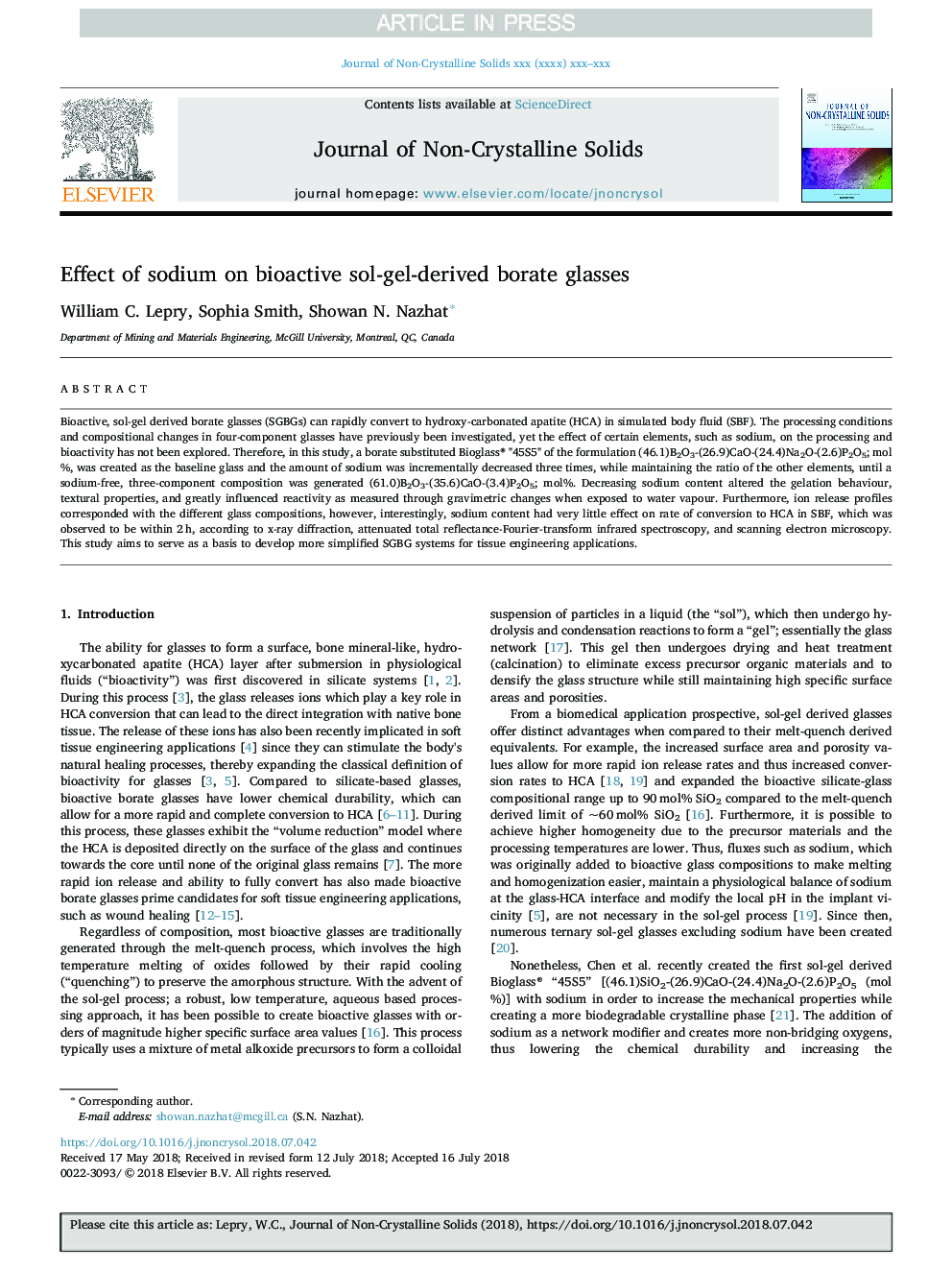| Article ID | Journal | Published Year | Pages | File Type |
|---|---|---|---|---|
| 10155536 | Journal of Non-Crystalline Solids | 2018 | 8 Pages |
Abstract
Bioactive, sol-gel derived borate glasses (SGBGs) can rapidly convert to hydroxy-carbonated apatite (HCA) in simulated body fluid (SBF). The processing conditions and compositional changes in four-component glasses have previously been investigated, yet the effect of certain elements, such as sodium, on the processing and bioactivity has not been explored. Therefore, in this study, a borate substituted Bioglass® "45S5" of the formulation (46.1)B2O3-(26.9)CaO-(24.4)Na2O-(2.6)P2O5; mol%, was created as the baseline glass and the amount of sodium was incrementally decreased three times, while maintaining the ratio of the other elements, until a sodium-free, three-component composition was generated (61.0)B2O3-(35.6)CaO-(3.4)P2O5; mol%. Decreasing sodium content altered the gelation behaviour, textural properties, and greatly influenced reactivity as measured through gravimetric changes when exposed to water vapour. Furthermore, ion release profiles corresponded with the different glass compositions, however, interestingly, sodium content had very little effect on rate of conversion to HCA in SBF, which was observed to be within 2â¯h, according to x-ray diffraction, attenuated total reflectance-Fourier-transform infrared spectroscopy, and scanning electron microscopy. This study aims to serve as a basis to develop more simplified SGBG systems for tissue engineering applications.
Related Topics
Physical Sciences and Engineering
Materials Science
Ceramics and Composites
Authors
William C. Lepry, Sophia Smith, Showan N. Nazhat,
